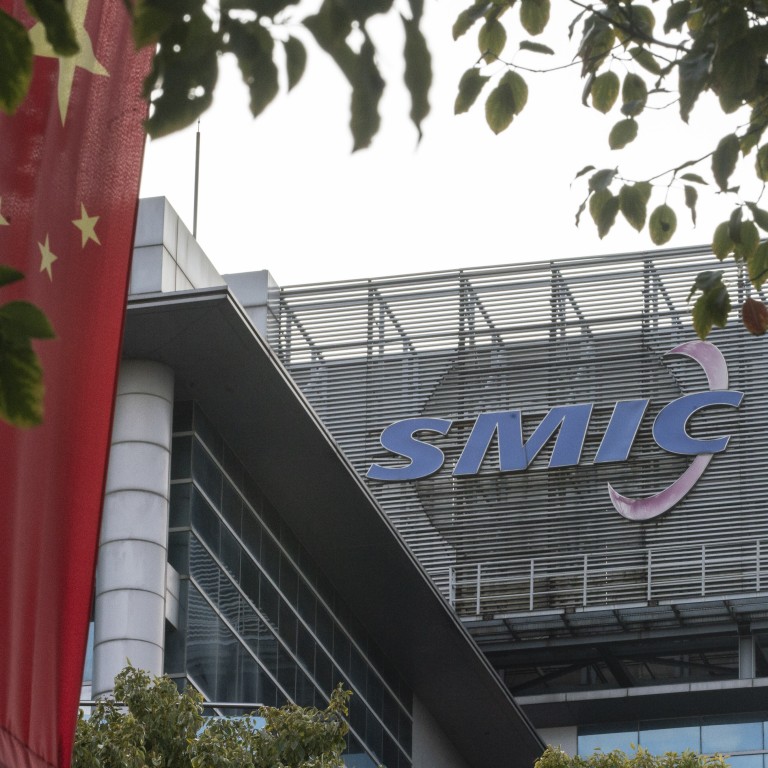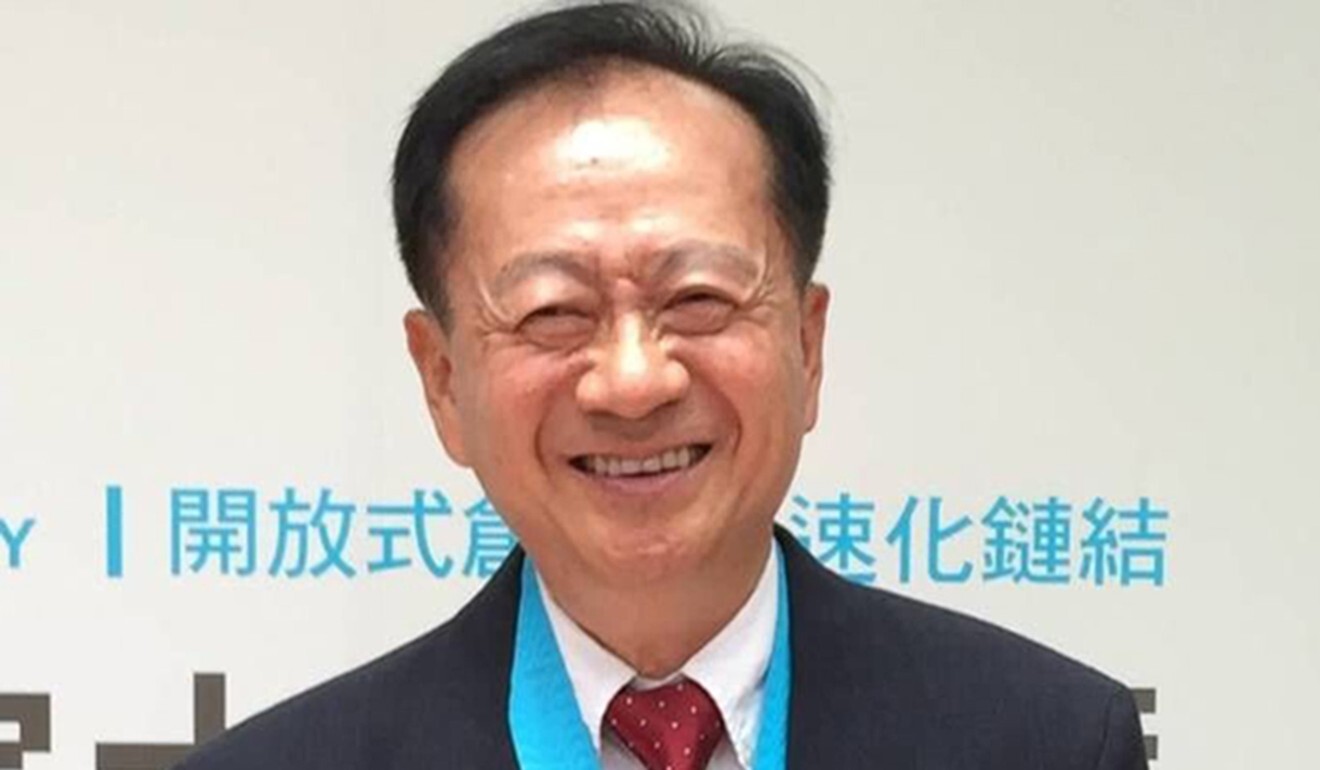
Explainer | China’s chip champion: can SMIC lead Beijing’s quest for semiconductor self-sufficiency?
- Many of SMIC’s engineers, as well as key senior managers, were recruited from Taiwan, with TSMC being a primary target for talent
- SMIC’s lack of access to EUV technology will mean it cannot produce more advanced chips, hindering its attempts to catch up to TSMC
Semiconductor production is a priority in China’s latest five-year plan, as the world’s second-largest economy braces for a heightened tech war with the US. China’s output of integrated circuits (ICs) reached a monthly record in July on the back of strong demand and the addition of new production capacity.
SMIC is building a new wafer fab in Beijing, expected to start operations in 2024, while a new Shenzhen plant will begin production next year. The company is also investing in a new facility in the Shanghai Lin-Gang area, a semiconductor industry cluster designated by the city government.
Tapping experienced semiconductor talent from Taiwan, the mainland Chinese chip foundry has been able quickly move up the technology ladder since it was established.
TSMC pledge to hand over chip data to US stirs anger, fear in China
Here is all you need to know about China’s chip champion SMIC and how it is leading Beijing’s drive for semiconductor self-sufficiency.
What is SMIC, and what are its connections to Taiwan?
SMIC was established in April 2000 by Richard Chang Rugin, who made a career of building new wafer fabs during two decades at US chip maker Texas Instruments.
Many of SMIC’s engineers, as well as key senior managers, were recruited from Taiwan, with TSMC being a primary target for talent.
Chang stepped down as CEO of SMIC in November 2009, three days after the company settled a years-long lawsuit with TSMC, which had sued Chang’s company for alleged theft of intellectual property by hiring former TSMC employees.
Since 2017, SMIC has operated a shared senior management arrangement, with Zhao Haijun and Liang Mong Song appointed co-CEOs in October of that year.
Zhao joined the company in October 2010, with 28 years of experience in the industry, while Liang came to SMIC with 35 years of experience, including senior positions in research and development at TSMC until 2009.

Another ex-TSMC executive was hired by SMIC in December 2020. Chiang Shang-yi was appointed vice-chairman after a 40-year career in the semiconductor industry, including as head of the TSMC R&D team.
SMIC’s co-CEOs reportedly have different agendas. Liang backed an aggressive leading-edge strategy for SMIC, which put him at odds with Zhao, who preferred to develop commercially viable products using older technology, according to a report by the Financial Times last year.
How does SMIC fit into China’s self-sufficiency ambitions?
As China’s biggest and most advanced chip maker, SMIC is considered the country’s national champion in Beijing’s drive to establish self-sufficiency in semiconductors amid the US-China tech war.
Chip production is a priority in China’s latest five-year plan as the country braces for a heightened tech war with the US. China’s output of integrated circuits (ICs) rose more than 41 per cent year on year to 31.6 billion units in July, a monthly record, on the back of strong demand and the addition of new production capacity.
SMIC derives more than half its wafer revenues from mainland China and Hong Kong, while smartphone chips are its biggest market, accounting for 44.4 per cent of wafer revenue last year.
SMIC generates the bulk of its sales from mature technology nodes, which accounted for 37.5 per cent of its total in the first quarter of 2021.
How has SMIC been affected by the US-China tech war?
In October 2020, the US Department of Commerce designated SMIC as a “military end user”, restricting it from using US technologies.
Then in December that year, SMIC was added to the Entity List on the grounds of US national security and foreign policy interests. This further restricted the company from purchasing US chip manufacturing equipment, requiring a licence to be issued before shipments can be made.
The US Commerce Department has said it will apply a “presumption of denial” for products required to produce chips at the 10-nanometre and below node. The restriction will hinder SMIC’s ability to import extreme ultraviolet (EUV) scanners sold by Dutch company ASML.
What is it doing to cope with US sanctions?
US trade restrictions, imposed on SMIC for its alleged links to the Chinese military – a charge it denies – continue to cloud its prospects for moving up the technology ladder, although recent export licence approvals show that the Chinese company has not been completely cut off from US technology.
In March, SMIC secured supplies of deep ultraviolet lithography systems from Dutch firm ASML in an amended purchase agreement worth US$1.2 billion, which could help ensure the Chinese firm’s capacity expansion for more mature nodes.
In chip packaging, SMIC has previously invested in specialist companies in this field. It holds 12.86 per cent equity in China’s JCET Group, the third largest IC packaging and testing company after ASE of Taiwan and Amkor of South Korea.
Will SMIC ever be a world leader in making chips?
SMIC ranks No 5 among the top 10 foundries, with a market share of 5 per cent, behind TSMC, Samsung Electronics, United Microelectrnics Corp and GlobalFoundries, according to Taiwan-based market research firm TrendForce (see chart).

However, with first quarter revenue of just over US$1 billion, SMIC is dwarfed by No 1 player TSMC, which reported first-quarter revenue of US$12.9 billion.
SMIC’s lack of access to EUV technology will mean it cannot produce more advanced chips, hindering its attempts to catch up to TSMC in terms of technology development. However, mature technology nodes from 350-nm to 28-nm are what most Chinese semiconductor design companies need, especially those designing chips for Internet of Things and car applications.
All three of the new fabs that SMIC is building in Beijing, Shanghai and Shenzhen are focused on the mature 28-nm technology node.

